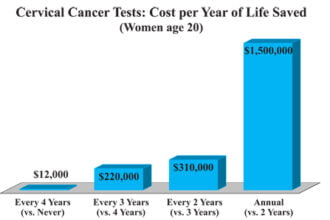At a combined retreat that I facilitated last month, a Board chair commented on the challenge of collaborative governance and lamented her steep learning curve: “It took me two years just to learn the vocabulary.” For people who do not have healthcare backgrounds, imagine the challenges of being responsible for hospital strategy in these rapidly changing times, with the viability of a valuable community resource resting on their decisions.
At a combined retreat that I facilitated last month, a Board chair commented on the challenge of collaborative governance and lamented her steep learning curve: “It took me two years just to learn the vocabulary.” For people who do not have healthcare backgrounds, imagine the challenges of being responsible for hospital strategy in these rapidly changing times, with the viability of a valuable community resource resting on their decisions.
For this reason, I recommend that new Board members receive a copy of Houle & Fleece’s latest book, The New Health Age: The Future of Healthcare in America. This 311 page book comes with a glossary of healthcare abbreviations and 17 chapters divided into three parts: History and Context, The Dynamics of The New Health Age, and The Landscape of The New Health Age.
The flow dynamics of The New Health Age are:
- How we think about health care, moving from sickness to wellness
- How we deliver health care, moving from a reactive, episodic non-system to a more proactive system focused on providing coordinated,holistic care
- The economics of health care, in which we shift from volume-based, procedural reimbursement to more value-oriented metrics, based on quality, safety, and patient satisfaction scores.
By gaining an awareness of these dynamic flow changes, the benefits of change become clearer. For example,who would attack being more proactive to improve poor health care outcomes and reduce costs?
For those people who feel trapped in the headlights of life, not knowing where to start, I offered five “evergreen” suggestions for collaborative governance that will remain viable regardless of the outcome of the Supreme Court decision later this year:
1. Improve communication around hand-offs: one of the biggest reasons for hospital readmissions is failure to communicate a plan for patient needs across the care continuum.
2. Call patients after discharge: Waterbury (CT) Hospital has instituted a program where every patient receives a call from a healthcare professional within 48 hours of discharge. This process benefits the hospital in several ways. First, the patient is less likely to be readmitted to the hospital because of inadequate follow-up care, saving healthcare costs. Second, the patient feels a personal connection to the hospital and is more likely to recommend its services to family and friends. Third, the hospital catches medical issues more rapidly and is able to treat them with less-extreme options than if adverse drug reactions or signs of infection fester.
3. Look at long-term value as well as day-to-day needs: Often, we focus so intently on day-to-day and month-to-month department budgets that we forget to step back and look at the overall cost structure. For example, using mid-level providers to facilitate physicians’ discharging their patients earlier in the day and on weekends can drop overall length of hospital stay dramatically.
4. Eliminate as much non-value-added care as possible: Approximately 40 percent of the medical care provided in the United States may not add value, based on reports from The Dartmouth Institute for Health Policy and Clinical Practice. A good way to streamline healthcare practice is to use post-it notes and write down every step in the patient care process. Then put all the post-it notes on a wall, step back and determine which steps are unnecessary, consolidating the steps to make sure that each is adding value.
Medical centers in Indianapolis collaborated on quality and safety measures that would improve care and found 23 non-value-added steps they could remove and thereby decrease cost and improve outcomes. The likelihood of error increases with every step added to the care process.
5. Encourage patients to make better decisions about their health: A 2002 Health Affairs study that found that the contribution of medical care to longevity is only about 10 percent, compared to 40 percent for patient decisionmaking. The biggest contribution to patient longevity involved the decisions patients make about exercise, food intake, tobacco, seatbelt use, and whether those with multiple partners use protection.
Patients need to be reminded at every encounter that they have the biggest impact on their own health.
As always, I welcome your input to improve healthcare collaboration where you work.
Kenneth H. Cohn
© 2012, all rights reserved
Disclosure:
I have a material connection because I received a review copy that I can keep for consideration in preparing to write this content.
©2012 Healthcare Collaboration. All Rights Reserved.
.
Collaborative Governance is an original post from Kenneth Cohn on Healthcare Collaboration – Improving Physician-Hospital Relations






